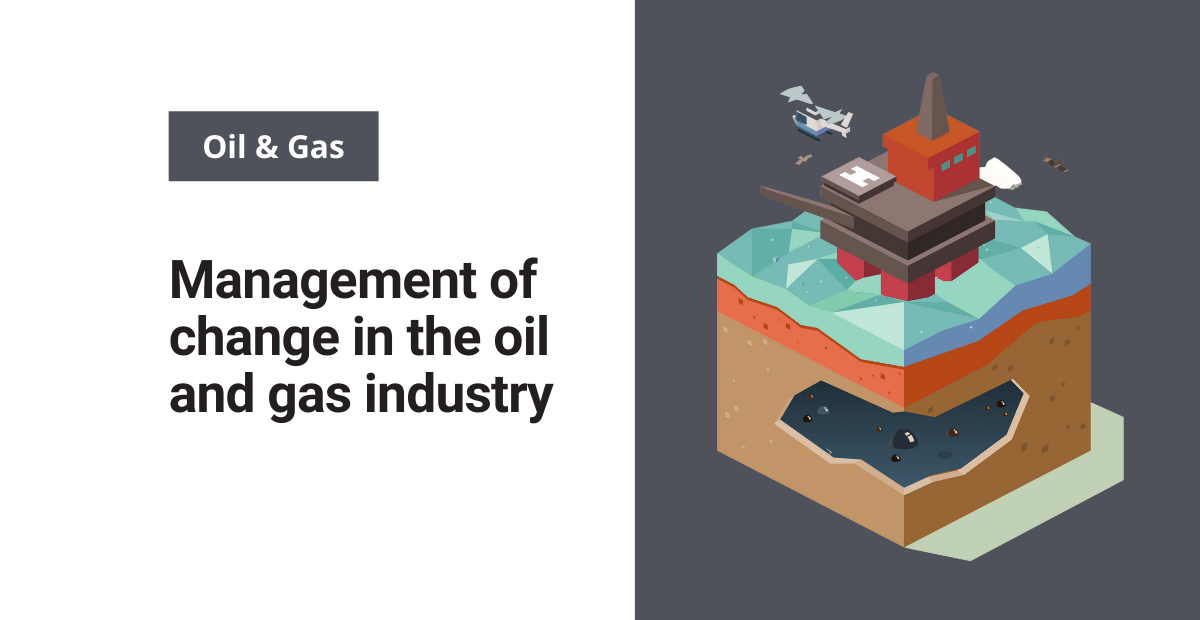“Plans are worthless, but planning is everything” This quote from president and former general Dwight D. Eisenhower is justifiably renowned because it applies to any process complex enough that a plan might be worthwhile.
In the oil and gas industry, everything has a plan because the consequences of failure in terms of the Environment, Health and Safety (EHS) are simply too high not to have one.
These come in the form of procedures, operating parameters, processes, guidelines, layouts, instructions, and even detailed workflows supported by EHS software. But as noted by the general, every plan no matter how well made eventually runs into something unanticipated.
What causes a change in plans?
During normal operations, most processes are reasonably routine, have a high level of repeatability, and can be scheduled or reasonably predicted.
However, some things are not within the scope of control – for example, if raw materials fail to arrive as scheduled and the plant has to slow or change production.
Any changes, even those that are expected or intended can create a disruptive knock-off effect on standardized processes. These most often come in the form of disruptions to normal processes caused by:
- Scheduled repairs
- Maintenance and testing
- Turnarounds
- Upgrading or replacing equipment
- Changes in staffing levels or of specific staff members
Examples of consequences due to the changes can include:
- Changes in the projected start and stop time of the disruption
- Changes in available service and maintenance equipment or availability
- Changes in the scope of work due to the discovery of new or different problems than originally expected
- Unexpected repairs or breakdowns
- Time or location critical disruptions to other parts of the facility during planned work
- Crew or shift changes
Why is managing change so critical?
Processes and equipment are designed to operate under a range of set conditions that are assumed to stay the same. During the sorts of disruptions listed above, many of the assumptions go out the window, and procedures risk not operating at full capacity.
Recognizing when a situation has changed sufficiently to require a management process and what changes should take place are critical to avoid future or immediate EHS issues.
Gaps in change management
In analyses by the Chemical Safety Board, OSHA, state safety councils, and other investigators break down the two key areas of communication, and crew or shift changes.
Information regarding changes or irregularities is easy to lose track of within most operations. Word of mouth and person to person reminders are not a replacement for alerting the crew as a whole and documenting the new situation for future use so that everyone involved in the work is aware.
Even if this information is available, people may not know where to find it easily. So, without urgency or sufficient attention, these details fall through the cracks. To prevent process safety incidents, it’s important that everyone understands major changes and how they impact safety.

Bridging the gaps
Consistent, repeatable, reliable, and easy to use systems for tracking and transmitting information in the MOC process are critical for success.
- Consistent, so that all users know what to do and what not to do in an MOC situation.
- Repeatable, so that workers can use the same processes in all MOC scenarios.
- Reliable, so that workers can see changes happening in real time and understand the variables involved.
Gaps in MOC processes and communication occur when it is easy to continue due to the existing processes and procedures for documenting and communicating.
They will continue to exist unless the solutions that close the gap are consistent, repeatable, reliable, and easy to use.
This is not because people lack the will or desire to do the right thing but simply that getting MOC right is one of many competing priorities for the limited time allotted.
Schedules change, key people may have to switch their focus to other tasks, employees move. Proper documentation, communication, and workflows are critical to avoid disruptions.
Having a well-organized MOC system in a continuously operating plant or facility is critical to ensure swift, safe, and effective completion of the work done.




